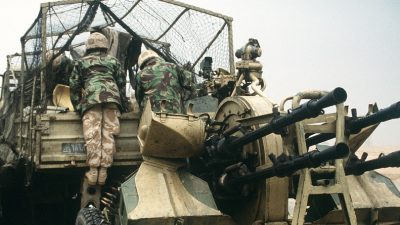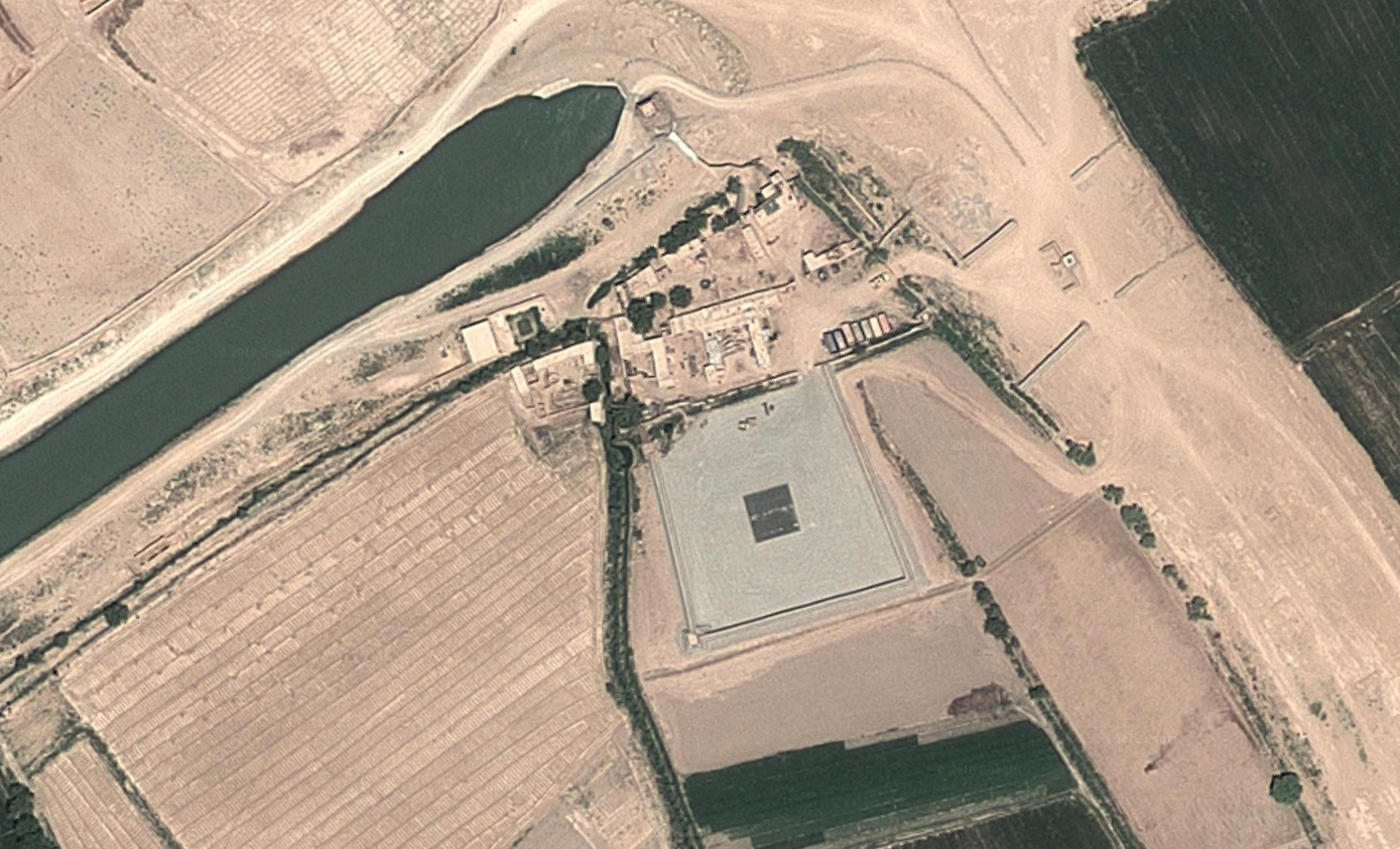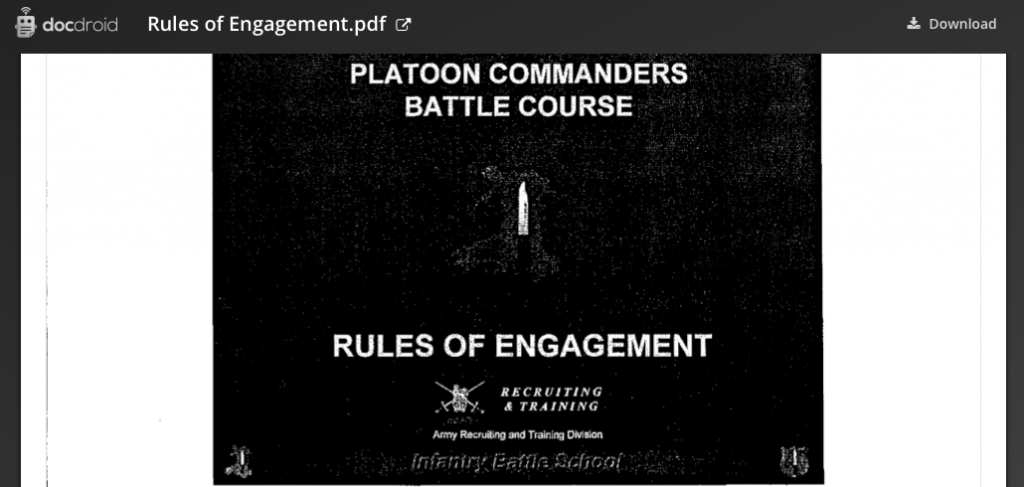British Army Permitted Shooting of Civilians in Iraq and Afghanistan
Soldiers who served in Basra in 2007 say they were told they could shoot anyone holding a phone or a shovel, or acting in any way suspiciously

All Global Research articles can be read in 51 languages by activating the “Translate Website” drop down menu on the top banner of our home page (Desktop version).
Visit and follow us on Instagram at @crg_globalresearch.
***
This article was originally published in February 2019.
The British army operated rules of engagement in Iraq and Afghanistan that at times allowed soldiers to shoot unarmed civilians who were suspected of keeping them under surveillance, a Middle East Eye investigation has established.
The casualties included a number of children and teenage boys, according to several former soldiers interviewed by MEE.
Two former infantrymen allege that they and their fellow soldiers serving in southern Iraq were at one point told that they had permission to shoot anyone seen holding a mobile telephone, carrying a shovel, or acting in any way suspiciously.
The rules were relaxed, they say, in part because of concerns that unarmed individuals were acting as spotters for militants, or were involved in planting roadside bombs.
Separately, a former Royal Marine says that one of his officers confessed to his men that he had been responsible for the fatal shooting of an Afghan boy, aged around eight, after the child’s father carried his body to the entrance of their forward operating base and demanded an explanation.
Another ex-soldier who spoke to MEE alleges that a cover-up was mounted after the fatal shooting of two unarmed teenage boys, which he says he witnessed in Afghanistan.
A pair of Soviet-era weapons were removed from a store at the British soldiers’ base, he said, and placed next to the bodies to give the false impression that the teenagers had been armed Taliban fighters.
This man says he saw similar weapons being stored at other bases. “I’m fairly sure that they were being kept for that purpose. We were visited daily by troops from headquarters, and these weapons could easily have been catalogued and sent back.”
Shooting ‘dickers’
One ex-soldier says he witnessed the fatal shootings of significant numbers of civilians in Basra, and does not believe that all the victims were keeping British troops under surveillance. He claims that the relaxing of the rules of engagement resulted in “a killing spree”.
He and his fellow soldiers were promised that they would be protected in the event of any investigation by military police, he says. “Our commanders, they would tell us: ‘We will protect you if any investigation comes. Just say you genuinely thought your life was at risk – those words will protect you.’”
Not all of the interviewees’ accounts could be independently verified by MEE. However, several ex-soldiers made broadly similar allegations after serving in different units, at different times and in two different theatres of war.
The UK’s Ministry of Defence declined to comment.
The targets of the shootings were known to all of the ex-soldiers as “dickers” – British army slang for a spotter. It is a term that was used for by soldiers for decades during the 30-year conflict in Northern Ireland, where some people in Irish nationalist areas would report troop movements to the Irish Republican Army.
In both Iraq and Afghanistan, troops appear to have been given permission to shoot “dickers” during periods when UK forces were coming under intense pressure from local militants opposed to their presence in the countries.
In Iraq, the practice appears to have begun in Amarah in the south east of the country in June 2004, during fighting between British soldiers and Shia militia groups.
Dan Mills, a sergeant with the Princess of Wales’s Royal Regiment, who took part in that fighting, later described how the rules of engagement were relaxed in order to target unarmed people who were directing rocket and mortar fire against British positions.
In a book that was ghost-written by Tom Newton Dunn, then the defence editor of the British newspaper The Sun, and which was published in 2007 following the receipt of advice from British army public relations officers, Mills disclosed that a colonel visiting from the UK advised that that they should open fire on “unarmed dickers”.
“I’m not encouraging wanton killing and recklessness,” the unnamed colonel is quoted as saying in the book, Sniper One. “But nowhere in the Rules of Engagement does it say you can’t shoot unarmed people.”
‘All the way from the top’
Mills and Newton Dunn wrote that the visiting colonel had given British troops “tacit permission to shoot unarmed civilians if and when we felt it necessary”, and that this had been done “without ministers having to tell parliament and cause a big hullabaloo across the liberal sections of the media”. They speculate that the decision “would have had to come all the way down from the top”.
Shortly afterwards, a British soldier shot a spotter in Amarah: “The kill had a substantial effect on the dicking,” the two men wrote. The attacks by Shia militia groups intensified, however.
Shooting “dickers” is not unlawful, according to experts in military law – as long as they are actually engaged in hostilities, and not using a mobile telephone for another purpose.
Under a 1977 amendment to the Geneva Conventions, civilians must not be attacked during a situation of international armed conflict “unless and for such time as they take a direct part in hostilities”. They lose their protected status if they take part in hostilities.
There is no precise definition of “direct participation”, however, and civilians are expected to be given the benefit of the doubt, if it is unclear whether or not they have engaged in hostilities.
Under UK domestic law – which applies at all times to British servicemen and women – a soldier can use force in defence of himself and others. This can include lethal force as long as it is reasonable in the circumstances.
Moreover, while women and children enjoy special protection under international law, nothing – except perhaps national rules of engagement – can limit the right to self defence: the young age of a suspected “dicker” is no bar to opening fire.
Junior British army officers are taught about the shooting of dickers during training.
One training aid made public during an inquiry into the death of an Iraqi man, Baha Mousa, who was tortured to death by British troops in 2003, says junior officers should be told that “a robust approach must be adopted” when dealing with dickers: at very least their phones and any photographs they have taken must be confiscated.
The training aid adds: “In some instances Dickers may be viewed as a legitimate target when in contact.”
The British army’s guide to the law of armed conflict also states that civilians “lose their protection when they take a direct part in armed conflict”.
This means that soldiers operating among civilians need on occasion to quickly make difficult life-or-death decisions – often at night and sometimes while under fire – about whether an individual poses a threat or is simply going about their business.
In early 2007, in Basra, soldiers with the 2nd battalion of the Duke of Lancaster’s Regiment are said to have been told that the rules of engagement were being changed at a time when they were being increasingly besieged within their bases across the city.
Phones and shovels
Two former soldiers with the battalion, who operated from different bases, say they were told that under the new rules they could shoot anyone seen with a mobile telephone, carrying a shovel, or acting suspiciously, such as being on the roof of a building.
Civilians carrying shovels came to be seen as legitimate targets because of the number of improvised explosive devices that were being dug in beside roads.
Both men say they were informed of the change in the rules of engagement by senior NCOs, and not by their battalion’s officers.
Most of the shooting that is said to have followed the relaxation of these rules happened during night-time patrols that were conducted in armoured vehicles; the soldiers say they were not expected to ask for permission before opening fire.
“Anyone you deem is a terrorist, you shoot them,” one of the soldiers said. “But how could we know if they were a threat? Not all of them were were dickers, some were just people holding phones.
“We were shooting old men, young men. This is what I witnessed. I have never seen such lawlessness.”
However, his former comrade from the same battalion defended the relaxation of the rules of engagement: “You were scared, and we were trying to protect ourselves,” he said.
A former Royal Marine who served in Afghanistan at the end of the following year, on a military base at Sangin in Helmand province, says that he was expected to issue verbal warnings to “dickers”, and then fire warning shots – but that this routine was not always followed.
“There was an incident where somebody shot a kid, under the impression they were dicking us. It was actually the captain of our troop who shot the boy.
“The father came up carrying his boy. He was about eight. It turned out the boss had shot the kid, he believed he was dicking us, but he said he hadn’t followed the rules.
“The boss had quite a crisis of conscience about reporting it, he was a Christian guy. It was made clear to him by the guys that if he said he had followed the rules of engagement, they would back him up, regardless of whether he did or not.
“The guys were, like: ‘You don’t have to do this, we’ll look after you.’ But the boss reported what he had done and was removed from the troop.”
In a later incident in the area, three Royal Marines were killed by a suicide bomber aged around 13, who pushed a wheelbarrow towards them and then detonated explosives hidden inside it.
‘Drop weapons’
A former infantryman who served in Nad-e Ali in Helmand in 2010, with the Parachute Regiment, said that on arrival in the province he was told that he was no longer permitted to shoot civilians thought to be keeping troops under surveillance.
“During our first briefing, we were told: ‘We are no longer shooting dickers.’ It was back to winning hearts and minds.”
However, this man alleges that British troops continued to shoot civilians, and says that on one occasion a cover-up was mounted to conceal the fact that two teenage boys had been unarmed when they were killed.
While serving at a base known to the British as Quadrat in the district of Nad-e Ali, he and other soldiers saw two youths approaching on a scooter. “They were heading straight towards us. We hadn’t seen a vehicle before – you didn’t even see any tractors in the fields.
“The lieutenant who was in charge ordered that warning shots be fired. We were firing over their heads and then at the ground in front of them but they just kept coming. They were laughing. I wondered whether they were high.

A satellite image showing the British Army’s Quadrat base in the district of Nad-e Ali in Afghanistan (Google Maps)
“Then they took a right turn along a canal and headed away from us. When they were about 300 yards away from us, a corporal decided to fire a GPMG (general-purpose machine gun) into them.
“He fired about 10 or 12 rounds. They were hit three times. Because they were riding away from us, one round went into the back of the pillion passenger and came out of the front of the guy who riding it.”
A patrol was sent out and discovered that neither of the boys had been armed, according to this ex-soldier. At this point, he alleges, two Soviet-era weapons – an assault rifle and a machine gun – were taken from the base and placed beside their bodies.
After the scene was photographed, the youths’ bodies were taken back to the base and then loaded aboard a helicopter.
Officers from the UK’s Royal Military Police have been investigating separate allegations that special forces troops planted weapons on a number of Afghan men who were shot dead during night raids on their homes.
One military policeman told the Sunday Times newspaper in 2017 that such firearms were known as “drop weapons” among those who used them.
According to the ex-soldier who told the MEE that he saw “drop weapons” being planted next to the bodies of the two teenage moped riders, all the men at his forward operating base were subsequently debriefed by a company commander and a senior NCO.
“We were told that our story was this: they were armed and we believed they posed a threat to one of our patrols that was in the area they were driving towards. Then we were asked: ‘Does anyone have a problem with this? If so, tell us now.’
“Nobody said anything. But they weren’t armed. And there was no patrol out.”
This ex-soldier says he formed the impression that this was not the first time such a cover-up had been concocted. “I think that explains why we were keeping those weapons on the bases.”
‘Farmer shot in the back’
This man alleges that some of the young soldiers on the base talked repeatedly of how “they wanted a kill” before their tour ended.
During one fire fight with the Taliban, this man alleges that he saw a farmer being shot by a member of his patrol.
“We saw him working in his field, and when we came under fire we saw him running away. He wasn’t in the same direction as the Taliban, he had his back towards us, and he was just shot in the back.
“I had a lot to say about that when we got back. There were about eight or nine of us on that patrol. I wanted to know which of them had shot the farmer. Nobody would admit that they fired the shot.”
A sixth ex-soldier, who served in Helmand in 2011 with a unit called 1st Battalion The Rifles, alleges that he saw a “dicker” being shot deliberately while on patrol in the Sayedabad Kalay area of Nahr-e Saraj district of Helmand.
“I saw the [patrol] commander radio back for permission to shoot someone with a mobile phone, watching us. He would have asked the CO (commanding officer) or whoever was in the ops room at the time. He was given permission and the man was shot.”
This man says that he frequently saw warning shots being fired, and that sometimes the warning shot would hit the dicker. He believes that it is possible that this was sometimes done deliberately.
Not all the ex-soldiers interviewed by MEE said they had direct experience of the shooting of “dickers”, and a number were confident that their own units had never done this during their operational tours.
“We saw plenty of dickers and would fire plenty of warning shots,” said one. “But there was never any suggestion that we should shoot them.”
Civilian casualties were a frequent source of contention between the coalition commanders and civilian authorities in both Iraq and Afghanistan. In June 2007, President Hamid Karzai spoke publicly of his anger over civilian deaths.
In response, US commander General Stanley McChrystal adopted a policy of what he termed “courageous restraint”, under which forces were expected to use less firepower.
It was not long, however, before British troops were complaining that the new policy put them at greater risk from the Taliban, saying they were being expected to fight “with one hand tied behind our backs”.
One of the former infantrymen with the Duke of Lancaster’s Regiment who says he saw significant numbers of unarmed people being shot in Basra says he has been drinking heavily and has suffered poor mental health since leaving the army. He attributes these problems to his experiences in Iraq.
Since leaving the army, he has been undergoing treatment with the UK’s National Health Service, where he says a psychiatrist has diagnosed severe post-traumatic stress disorder.
*
Note to readers: Please click the share buttons above or below. Follow us on Instagram, @crg_globalresearch. Forward this article to your email lists. Crosspost on your blog site, internet forums. etc.
Featured image is from Left Foot Forward
The Globalization of War: America’s “Long War” against Humanity
Michel Chossudovsky
The “globalization of war” is a hegemonic project. Major military and covert intelligence operations are being undertaken simultaneously in the Middle East, Eastern Europe, sub-Saharan Africa, Central Asia and the Far East. The U.S. military agenda combines both major theater operations as well as covert actions geared towards destabilizing sovereign states.
- ISBN Number: 978-0-9737147-6-0
- Year: 2015
- Pages: 240 Pages
List Price: $22.95



